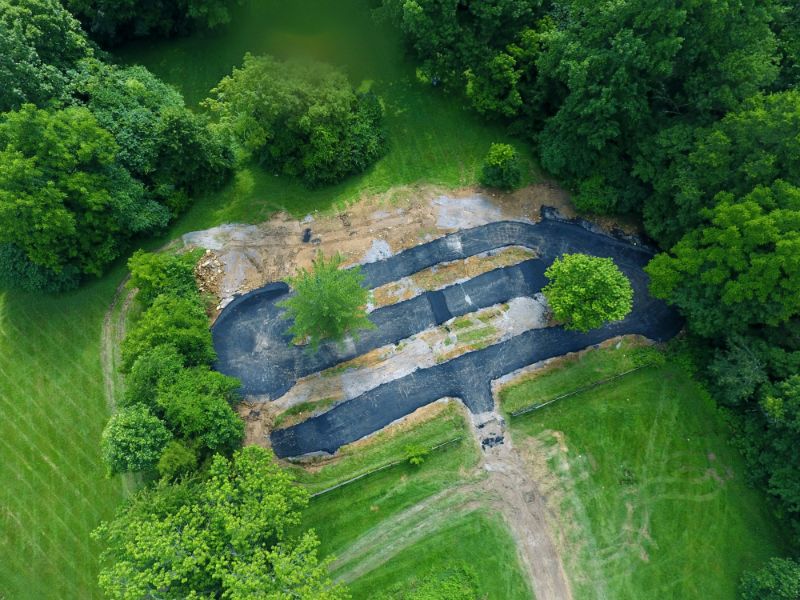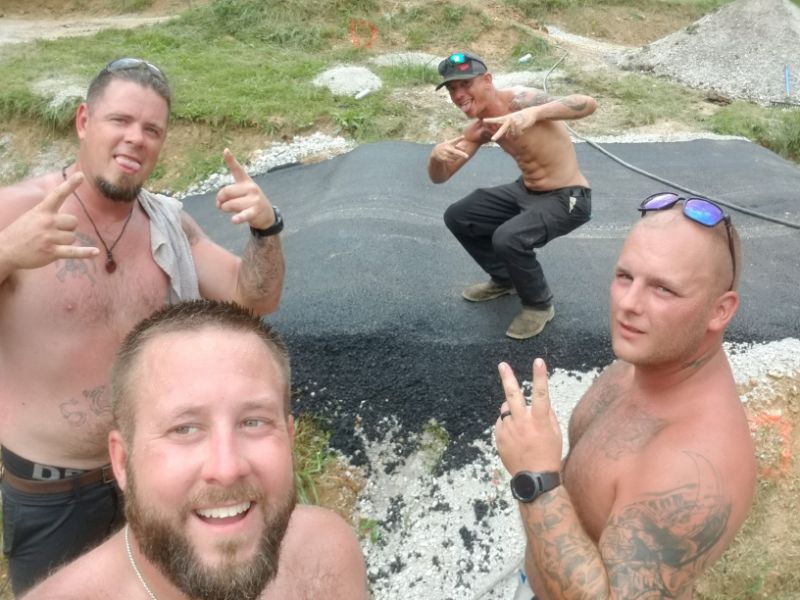ADC Paving Tackles BMX Tracks
BY AsphaltPro Staff

When Kevin Gray was tasked with paving a bicycle motocross (BMX) track, he didn’t know where to begin.
“This was hands-down the most unique project we’ve ever done,” he said. Gray is the president of ADC Paving, Louisville, Kentucky. The company has been family owned and operated since 1959, with Gray and his wife, Angela, taking over in 2011. “When you own your own business, you find yourself overcoming challenges and situations you couldn’t even imagine until you do it.”
The BMX track was one of those kinds of jobs. The opportunity came out of left field. Gray’s 9-year-old son played little league baseball with a kid who was involved in competitive BMX racing. The child’s father had already constructed a dirt practice track on the family’s property, but was interested in an upgrade.
“This isn’t the type of job we’d even entertain,” Gray said. ADC Paving mostly performs commercial paving, pavement maintenance and some street and road construction in the Louisville area. “I didn’t think anyone else in town would do this type of niche work, and I wanted to help him out. He’d been wanting to blacktop the track for years.”
The job proved to be just as challenging as Gray thought it would be, if not more so. The crew graded the track with its Caterpillar 289D tracked skid steer and 262 rubber tire skid steer. They were also able to perform some of the stone work with skid steers, but laying the asphalt required a substantial amount of handwork.
Laying out the track and placing the stone was accomplished in one day. The paving process took two days of hard work in 110-degree heat.

Gray said the challenges this project presented gave him an opportunity to identify employees who could think outside of the box.
“This job was about as labor-intensive as paving asphalt can get,” Gray said. The twists and turns and bumps of the project made it infeasible to use a paver on the job; almost the whole job required manual handwork.
“We didn’t want to risk disturbing the underlying stonework with our paver, especially when the straightaways where we could use our paver were so few and far between,” Gray said. “We just put our heads down and hopped to it.”
In total, the job required roughly 100 tons of dense-graded stone and 70 tons of asphalt, a standard commercial surface course. The most significant challenge proved to be the 15-foot-tall bowl turns, each of which required 10 tons of asphalt.
To pave the bowls, the crew delivered mix by the wheelbarrow-full to the bowls and constructed the turns from bottom to top. The crew used Sakai plate compactors for most of the bowls, but as they reached the higher, almost vertical part of the bowl the crew was limited to using hand tamps for compaction. They worked only a few feet at a time, striving to keep the mix well-blended and leave behind a smooth product.
“Foot by foot, we were able to put this track down,” Gray said. “We wanted to make it look as good as possible, even though it had all that handwork.”
The first turn took roughly half of a day, as the crew learned how best to go about the task. After that, they were able to get the process down to a couple of hours per turn. For the straightaways, the crew was able to use a Wacker Neuson RD12 1-ton roller.
Because the work required so much manual effort, and due to the temperatures at which the crew worked, Gray staffed the job with two four-man teams. One team rested while the other team worked.
“By the time we were done, it was sort of a ‘last man standing’ type of challenge,” Gray said. “It’s not often I have to hop in with the crew. But, we do whatever it takes.”
The job also had unexpected benefits for Gray. “As a business owner, this type of job brought to the forefront who my best employees are,” he said. “It showed me who was willing to work outside the box. It really made the employees who are critical pieces of the company stand out.”
When asked if he would do another BMX track if given the opportunity, Gray’s openness to overcoming new challenges was apparent.
“We learned a lot of lessons on this one,” he said. “I think we’d bite another one off, if that made sense. With how labor-intensive and niche these tracks are, I bet you could make a good chunk of change specializing in them.”
In the end, the result of the crew’s hard work was worth it: “Watching that kid zip around on the track we built with a big smile on his face–that’s why we did it!”
